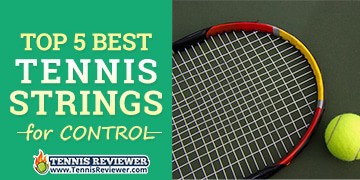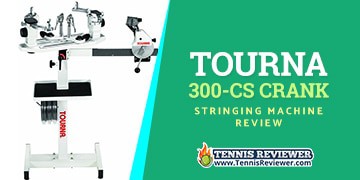As a beginner or even an intermediate tennis player, you may wonder about the difference between natural gut and synthetic gut. Which one should you go for? Which string will be better for your child as a professional tennis player? Read on to find out!
Strings are the backbone of rackets. However, they are merely an afterthought for many players. Tennis players need to invest more time in selecting rackets with the best tennis strings as they affect durability and playability.
Luckily, the technology behind synthetic strings has been dramatically improved in the last two decades. As a result, a reduced number of “bad” strings exist. Nonetheless, not every string and string tension is suited for all tennis players. So how do you know which strings best suit your child’s play?
In general, thinner strings present players with a boosted playability, whereas thicker strings give increased durability. Gauges of tennis strings vary from 15 to 19 for the thickest and thinnest, respectively. Half-gauges are identified using an L, meaning “light,” e.g., 16L, 17L. Thus, a 15-gauge string is thicker than a 15L.
Thinner strings offer more spin potential as they allow greater embedment of the strings into the ball. However, with the wide variety of string types in the market, choosing one may prove overwhelming and confusing. Things are further complicated by the fact that you need to pick a tension and a gauge next.
Below, we will guide you to get the ideal tennis racket for someone or your child. In addition, you will learn of the various tennis string types and understand the advantages and disadvantages associated with them.
Also, you will understand how important the gauge of a string is and be in a better position to choose a fitting one for your child.
To get started on the various string types, we need first to categorize them into groups. All strings generally fit into either of two groups, natural gut or synthetic gut.
Synthetic Gut
Synthetic gut is made from nylon and consists of one filament. The string is easy and cheap to make, which makes it affordable to buy.
The synthetic gut tennis string is the most widely used string type. Although it is made of nylon, you should not confuse it with tournament nylon.
Roughly about three-quarters of club players use synthetic gut strings. The rackets are well priced, which could also explain this proportion.
Nylon is a critical material in the tennis scene. The importance of nylon cannot be downplayed since the material possesses several dynamic characteristics and may be adjusted to offer varying playing properties.
In general, nylon strings have more than a single wrap and are of better quality compared to single wrap. In addition, the number of wraps reduces tension loss, often experienced in nylon strings. If your child has the tendency of breaking strings, the synthetic gut will not be very durable. You might realize it also quickly gets soft. It is, however, a solid string and a perfect choice for the average weekend hacker.
Natural Gut
Natural gut tennis string has been around the longest. It is the favorite type of tennis string for most professional players, Roger Federer included.
Natural gut strings are assembled from cow intestines and go way back to when Pierre Babolat used intestines from a sheep to manufacture them in 1875. From then, gut established itself as the benchmark for the rest of the strings available in the market.
Some of the reasons behind this are:
- The natural gut has the greatest strength known.
- Natural gut has the most remarkable ability to hold tension in comparison to other strings.
- It stays soft even at significant tensions.
- Natural gut’s arm friendliness is better than any other synthetic string.
Natural gut is appreciated for each reason mentioned above, and it can be strung fairly tight to achieve extra control without losing power like in polyester strings. In addition, you do not get any feeling of increased impact shock capable of triggering tennis elbow.
Despite all these benefits, why do people still use synthetic strings if the natural gut is as good as said?
The flip side is that the natural gut racket string is costly and does not perform well in particular weather conditions.
It is expensive because of the high manufacturing cost. It is an organic matter, and for it to be converted into tennis string, tremendous labor goes into the process with many steps.
Another downside is that the natural gut does not do well in humid or wet conditions. It can quickly fray and degrade when moist. If your surroundings are damp or wet, and you use natural gut to play, ensure that an extra racket with synthetic string is at your disposal in the event of bad weather.
Natural gut is at times fragile on the off-center hits. Therefore, if your child has the habit of breaking strings, the string type might not be ideal for you. It is also very delicate, necessitating the need for careful handling.
Another downside is that gut is susceptible to changing quality control. Depending on the age, brand, batch, grade, and storage, the quality may be affected.
Conclusion
So, who is the ideal fit for the natural gut? Which players? The answer is all the types of players, regardless of their game. However, be ready to dig deeper into your pockets for these top-of-the-game strings. For aggressive baseliners with heavy topspin, the natural gut will not last as long as desired. They will need synthetic gut tennis strings for better performance.
You will realize that a better-quality gut offers more excellent durability than other string types for those flat-hitting shots, thanks to the associated tension retention. A dense string pattern also improves the natural gut’s longevity since there is reduced friction/movement in the string bed. On the other hand, synthetic gut strings offer a reliable alternative for those who don’t want to spend much on getting durable strings for their child’s tennis games.











